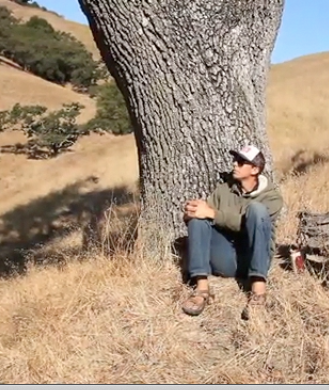 Welcome Back!
Welcome Back!
If you have a sit spot (a place that you sit outside regularly), or just somewhere you can go and observe nature for a bit, try this exercise next time you go there. Here’s the exercise…
Once you are settled in, start to listen for the quietest sound that you can hear. At first you will mostly notice the “louder of the quietest sounds”. With a cyclical re-attunement through each direction—listening again for the quietest sound—you will begin to notice the quieter, and finally, the quietest sounds. This ability will keep developing over time.
Your ears and awareness will slowly adjust and reach harder and harder for the quieter sounds. With practice you will really tune in to the quiet sounds, and suddenly your ears (and your awareness) will be much more receptive to taking in the nuances of bird language.
Your “Filters” & the Effect of the Quietest Sound
It is well known through neurological science that the ears—and senses—are constantly absorbing loads of information every moment.
Over time, the influences of cultural and societal context will cause a person to filter what is “irrelevant”. Bird language training is about re-awakening some of these aspects of sensory input that have been ‘muffled’ through the influences of our life experiences up until this point.
The trick is re-tuning into all of the data, and learning which pieces can help you understand what is happening through the voices of the birds. Through this process you will re-organize your filtering mechanisms. It can take a little time, so be patient with yourself.
You Are Part of the Story—Adjusting Your Impact
There is a story happening every moment on the landscape–and, you are part of it. Remember the “observer effect” from physics class? Well, that is coming into play as soon as you begin to head out for your sit spot. Your presence creates an impact on the story.
Do your best to recall that you are part of the story of the bird language that surrounds you. Choose what part you will play in the story. . . Set your intentions and goals, make some notes in your journal about your current awareness of bird language and wildlife relationships. Refer back to them in six months and see what has changed!
How big, and what type of impact you make, depends on how you move across the landscape, and how you conduct yourself. Learn to quiet yourself and move fluidly, like a calm breeze across the earth. Stop often to listen, observe and literally take a breath. Better still, take a few relaxing breaths and remember that you are in the story—ask yourself, “how?” Take your time and enjoy every step!
You might even develop the habit of practicing the ‘listening in four directions’ exercise whenever you stop to breathe. You will find this very helpful. Let’s look at this exercise of four directional listening in a bit more detail.
The Practice of Listening in Four Directions, in Detail
So, you’ve moved gracefully to your sit area. You have tuned into your senses, and started listening for the quietest sounds in the distance. Perhaps the quiet chip calls of a junco begin to catch your awareness, or the rustling scratch-feeding of a pair of spotted towhees starts to speak to you. Spend a few minutes listening deeply and absorbing the sonic environment.
Listening to 4 Directions, Above and Below
Next, begin sending your hearing straight out ahead of you. Start listening close in, and work your hearing further and further ahead of you onto the landscape. Then, send your hearing in the same way out to your right, and then to your left. Then listen for any sounds coming from behind you.
Spend a good minute or so – at least – listening in each direction. Then, listen above you as well. Listen to the sounds on the earth, too – the crinkling of leaves, tiny footsteps of mice and shrews, and the crickets hiding in the grass; even the movement of earthworms in the entrance to their tunnels can be heard at times. Finally, listen to the sounds made by your own presence.
Focusing Hearing with Questions
After consciously listening in each direction, let your hearing spread out in all directions all at once. Take this in as a tapestry in a diffused way of listening. Let the sounds move you now the way wind moves the leaves. Listen for what catches your attention and draws your curiosity. The more mysteries you engage with on the landscape, the more powerfully you may find that your hearing is “tugged” across the land by your deep questions.
Start with simple questions:
• What’s that sound right over there?
• What bird is singing near each direction? Who’s the closet sound-maker? Do I hear squirrels?
• Do I hear the distant sound of highways, jets, helicopters or other human-made sounds?
Relationship Builds Over Time
As you practice more and more times at your sit spot, let your questions evolve to deeper, more relationship-oriented questions with the “locals”: Where are the robin’s favorite perches? Is that a different robin counter-singing off to the east? Who is creating that alarm call at the edge of the meadow – is there a bobcat sneaking in there? These types of questions, along with an open and engaged sense of curiosity, create more reasons to listen.
Try this listening exercise this week, and don’t forget to keep an eye out for those “common” birds you have been getting to know.
Keep an ear to the ground (and the trees), and we’ll be back with more next week.
